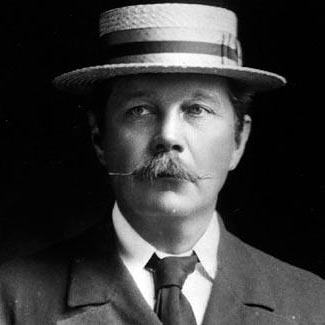
The Remedy
Robert Koch, Arthur Conan Doyle,
And the Quest to Cure Tuberculosis
Thomas Goetz
(Gotham)

History can be unkind to even those who have made the greatest contributions. This is one of the themes of The Remedy --- a new book by Thomas Goetz. Toward the end of the 19th Century, Robert Koch was probably the most famous person in Germany, if not all of Europe. Who was Robert Koch? you ask. Exactly my point. He was the physician-scientist who discovered the cause of tuberculosis, among other seminal contributions to medicine, and was awarded a Nobel Prize in 1905.Although Robert Koch's discoveries may not be familiar to most, he led a fascinating life which in Goetz's absorbing account reveals much about scientific competition, hubris, and the foibles of human nature. Folded into this drama, are equally intriguing stories about Arthur Conan Doyle, Louis Pasteur, and other notables of the late 19th century.
Robert Koch was born in Germany in 1843 and was something of a loner most of his life. With few resources while maintaining a busy practice of medicine, he hammered out what are known today as Koch's postulates. These are a revolutionary set of steps to demonstrate the causality of infectious diseases. It's difficult today, in an age of genomic medicine, to grasp the staggering significance of this insight into the mechanisms of human pathology.
Medicine in the 19th Century was just beginning to emerge from the stagnant ignorance of the Middle Ages. Most illnesses were caused, people thought, by foul air. Even the name malaria ("mal aria," bad air) reflects this sentiment. Among all the diseases that plagued mankind in those unenlightened times, tuberculosis was the deadliest. Some estimates have suggested that as many as twenty-five percent of the world's population suffered from consumption, as tuberculosis was known. For Koch, who was untrained in scientific methods or laboratory techniques, to take on this disease where all others had failed seemed foolhardy: an obscure David with a microscope against the powerful, sclerotic Goliath of entrenched German medicine. The idea that there were organisms so small they could only be seen with a microscope was thought to be preposterous. Rudolph Virchow, one of Germany's most eminent scientists of the day, was among the most vocal and vicious critics.
Virchow had given Koch nothing but grief. As Koch's work grew more influential and as his stature in Berlin grew, Virchow had publicly scorned both, deeming the germ theory inessential for medicine.
Fortunately for us, Robert Koch was guided by his passion to uncover the truth rather than the opinion of his superiors. In due course, he identified the tubercle bacillus, the microorganism responsible for causing tuberculosis. By itself, this might have been enough for most mortals. But Koch was a genius in the laboratory. In addition to tuberculosis, he made a number of other pioneering contributions involving anthrax, cholera, malaria and even bubonic plague. By the end of the 19th Century, his name was known worldwide, and in Germany he was considered to be a God. He was awarded prizes, honored by the German government with an institute named for him in Berlin.
However, this is not a simple story of the rise of an obscure scientist to the far reaches of fame and glory. Goetz wants us to know the full dimensions of this man, the graceful and the profane. At the peak of his long road to prominence, he took a mistress, a young lady almost 30 years his junior, all but abandoning his wife and daughter. Koch had fallen victim to Leonardo da Vinci's idea that "the greatest deception men suffer is from their own opinions." Having discovered the cause of tuberculosis, Robert Koch decided he was the one to develop a cure.
Working alone and mostly in secret, he concocted a substance he called lymph which contained tubercle bacilli and was injected into persons with active tuberculosis. Although the concept was badly misguided, this was a man who now had a high opinion of his abilities. Hard work and good intentions were all it would take to achieve another round of glory. He was inspired, in part, by the breathtaking discovery by Edward Jenner in the previous century who had found that he could prevent smallpox by administering small doses of the disease itself. Koch was also motivated by a desire to best his longtime French nemesis, Louis Pasteur, who some said was the greatest living scientist.
However, when it came to his "cure" or "The Remedy" of Goetz's title, Koch was simply overcome by hubris.
Koch, caught himself in his own trap --- because he himself had used the word Heilmittel (remedy). He had chosen that term, with all its associations, its mystique (it could also be translated as "health"), and its history of false promises. He offered the ultimate covenant of medicine: that it could undo what nature had done. He had played on his reputation, and the world had taken him at his word.
For a scientist who took pride in his meticulous methods, he did not follow the most basic tenants of clinical research and reported only uncontrolled anecdotes. But no matter, here he was, one of the most reputable names in medicine, announcing a cure for tuberculosis. Patients flocked to him from around the world begging to be treated. Then Goetz drives in the last nail:
Koch had violated the principles that he himself had laid down, his own postulates. Koch had gone ahead of his evidence. He had made a leap and been caught without a place to land.
Enter Arthur Conan Doyle. Doyle, as no one needs reminding, was a writer with extraordinary talent. Although he longed to be included in the pantheon of his contemporaries (Oscar Wilde, Bram Stoker, and James Barrie), he will forever be known for abandoning his fledgling career in medicine to give us the legendary Sherlock Holmes. Conan Doyle, as he liked to be known, never met Robert Koch. But they had a great deal in common and their lives traced very similar arcs.
Along with many other practicing physicians of the day, Conan Doyle was intrigued by Koch's "cure" for tuberculosis. In an effort to learn more and possibly meet Koch, Doyle went to Berlin in 1890 to attend one of the great man's demonstrations. However, rather than be inspired, Conan Doyle was grievously disillusioned. To his credit, he perceived "The Remedy" to be a hoax and on his return to England he wrote what is thought to be the first critical analysis of Koch's deception.
As it turns out, this kind of logical analysis was exactly what Conan Doyle was beginning to incorporate in his fictional stories. Although not trained as a researcher, Doyle had learned the importance of careful observation as a student of medicine in coming to diagnostic conclusions. It was this skill --- the ability to see things other people missed --- that became the essential element of Sherlock Holmes' success. It was also the same talent that allowed Koch to make his most important discoveries. Speaking of Sherlock, Goetz writes:
Holmes is precise, methodical, and keenly perceptive. He ably appropriates the techniques of the bacteriologist to discern what seems otherwise invisible.
Doyle's timing was perfect. By the late 19th Century, people were beginning to appreciate the potential of science in medicine and in their everyday lives. In the persona of Sherlock Holmes, Conan Doyle not only exploited this growing interest in science but also helped promote a fuller appreciation of how science could be beneficial to all.
Conan Doyle had learned ... how much people now expected of science, how much the public was open to its power to improve their lives. Conan Doyle's great insight was to see that openness as an opportunity to turn science into entertainment.
The public's appetite for this mix of science and intrigue was insatiable. The publisher of The Strand, a magazine that carried a new Sherlock tale each month, sometimes printed as many as 300,000 copies at a time. In their eagerness to get their hands on the next installment, people formed long queues before the magazine went on sale. It was an unprecedented success and made Conan Doyle rich.
And then he too fell victim to his own hubris. Homes was so popular that people started confusing the author with the fictional character. Even his own mother referred to him as Sherlock. Conan Doyle was furious; he wanted to be taken as a serious writer and not some hack who cranked out popular yarns. While traveling in Switzerland, Doyle thought he had found the perfect solution to his dilemma: kill this character who was ruining his life. In the next installment of The Strand, as every Sherlock Holmes fan will remember, Doyle had his hero and the evil Moriarity fall to their certain deaths at the Reichenbach Falls. His readers were dumbfounded at the gall and went into mourning, some even wearing black armbands. Because of the outcry, Conan Doyle eventually had to bring his hero back to life.
At the same time, Doyle's own life took an unexpected turn. His wife died of tuberculosis in 1906 after thirteen years of struggling in what had become an unremitting downward course. Goetz describes what happened next:
This man who had spent years championing medical science, in both practice and pen, instead became a devout believer in spiritualism and superstition ... After his wife's death he seemed drawn to séances and mysticism and all sorts of deeply unscientific hokum.
§ § § The Remedy is an easy book to like and is as entertaining as a good mystery. The explanations of important scientific discoveries are accessible to the lay reader while being embedded in the larger historical and cultural context of the times. Linking Robert Koch with Arthur Conan Doyle is a clever idea, but in the end doesn't do justice to either man's life. Furthermore, one might quibble with the title. The Remedy is a little misleading as it implies that Koch might actually have been successful in his quest for a cure for tuberculosis. Of course, with hindsight we know that this didn't happen. As Goetz himself says, the term has a "history of false promises." Perhaps a more accurate title might have been The Hoax.
 --- Larissa Belmondo
--- Larissa Belmondo